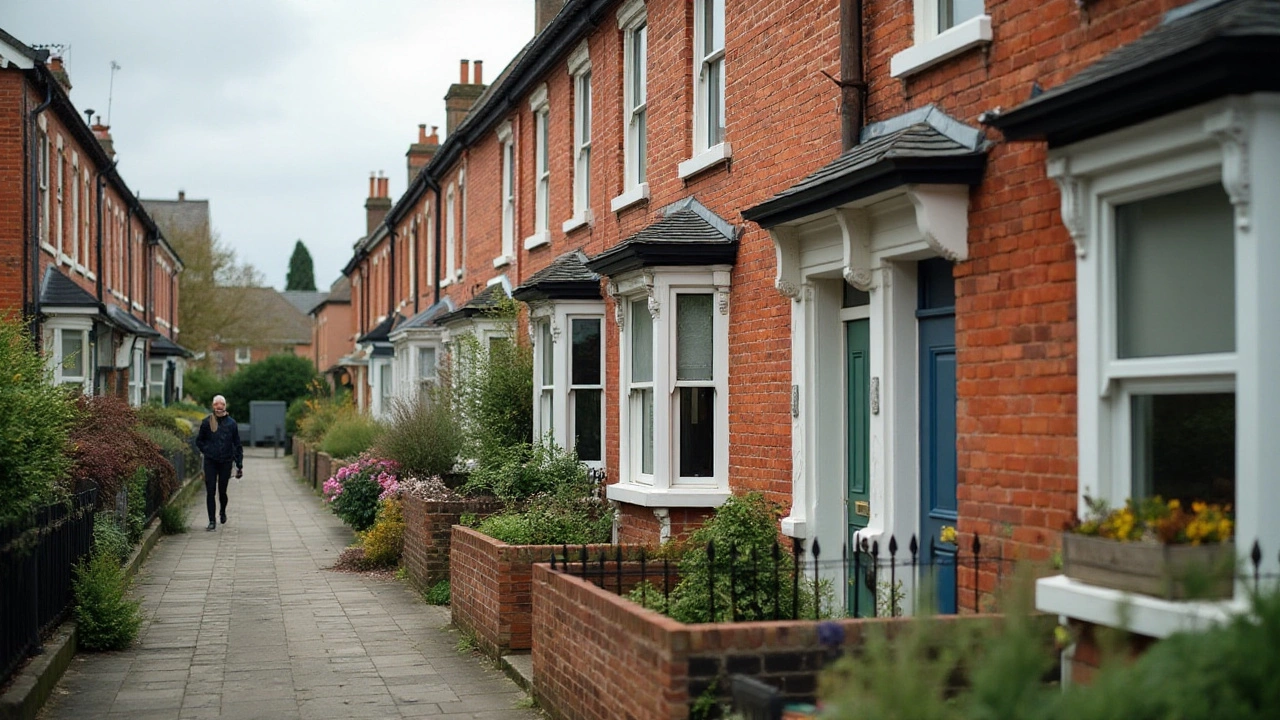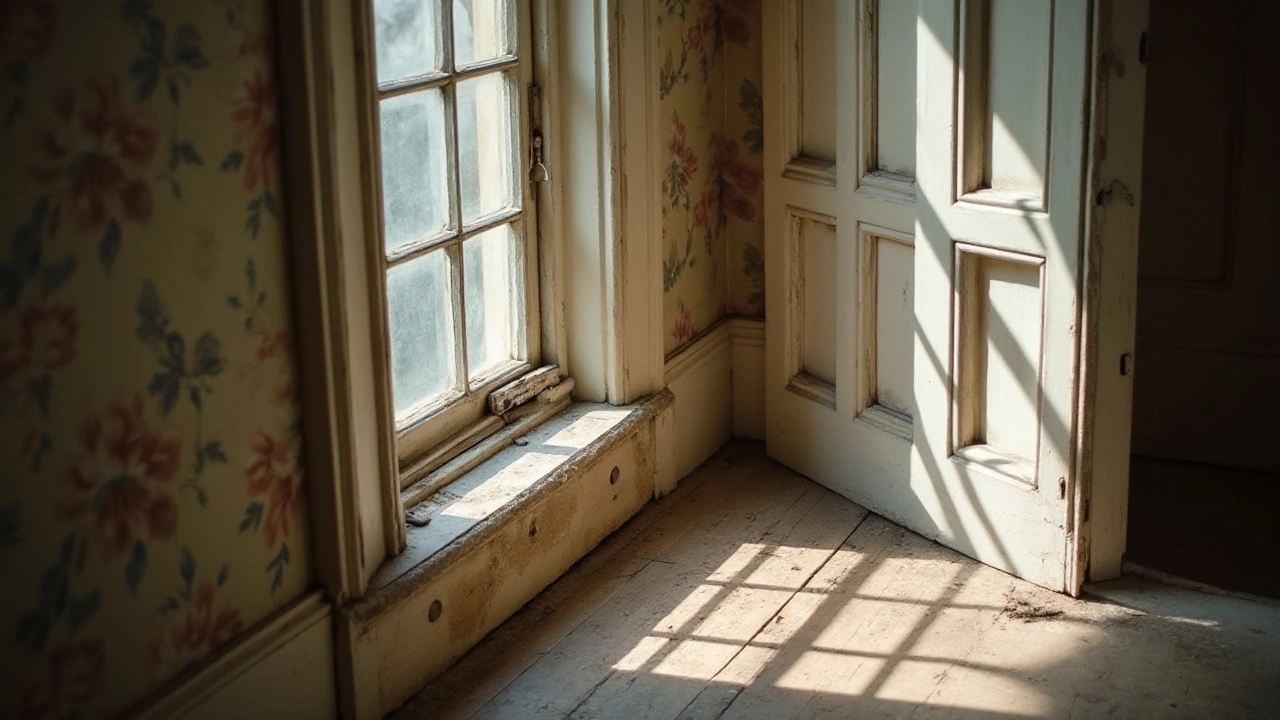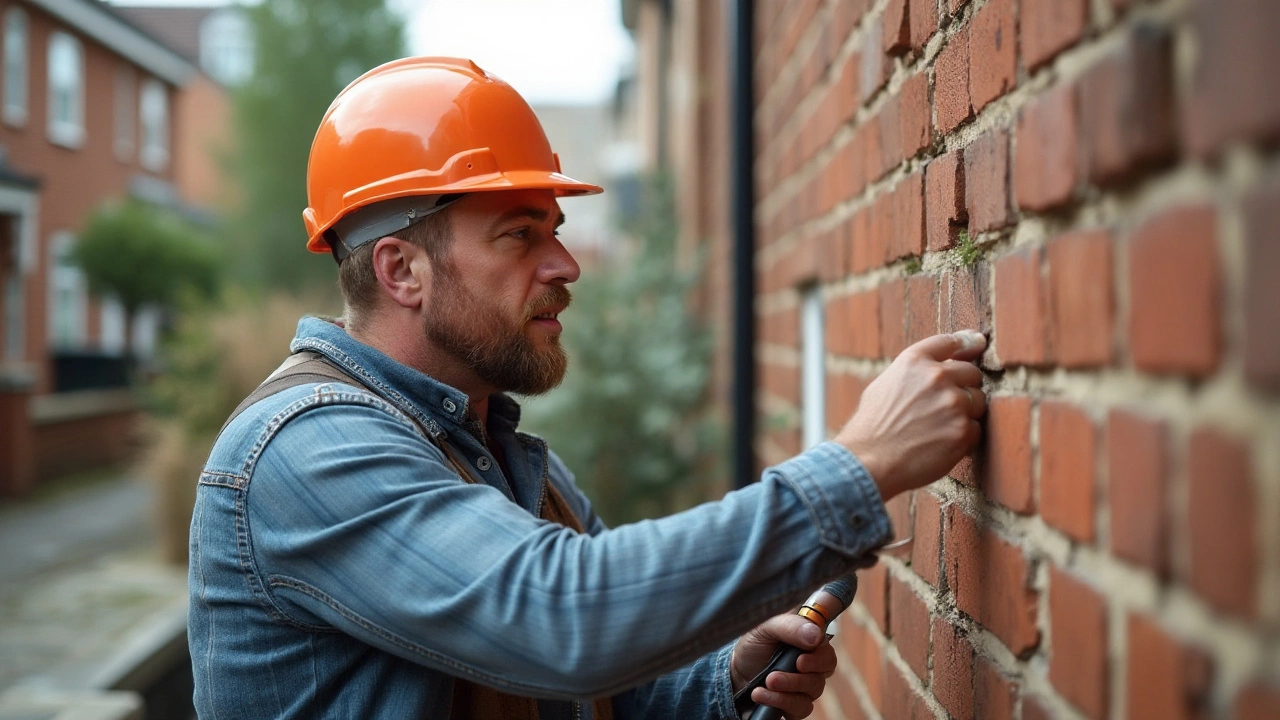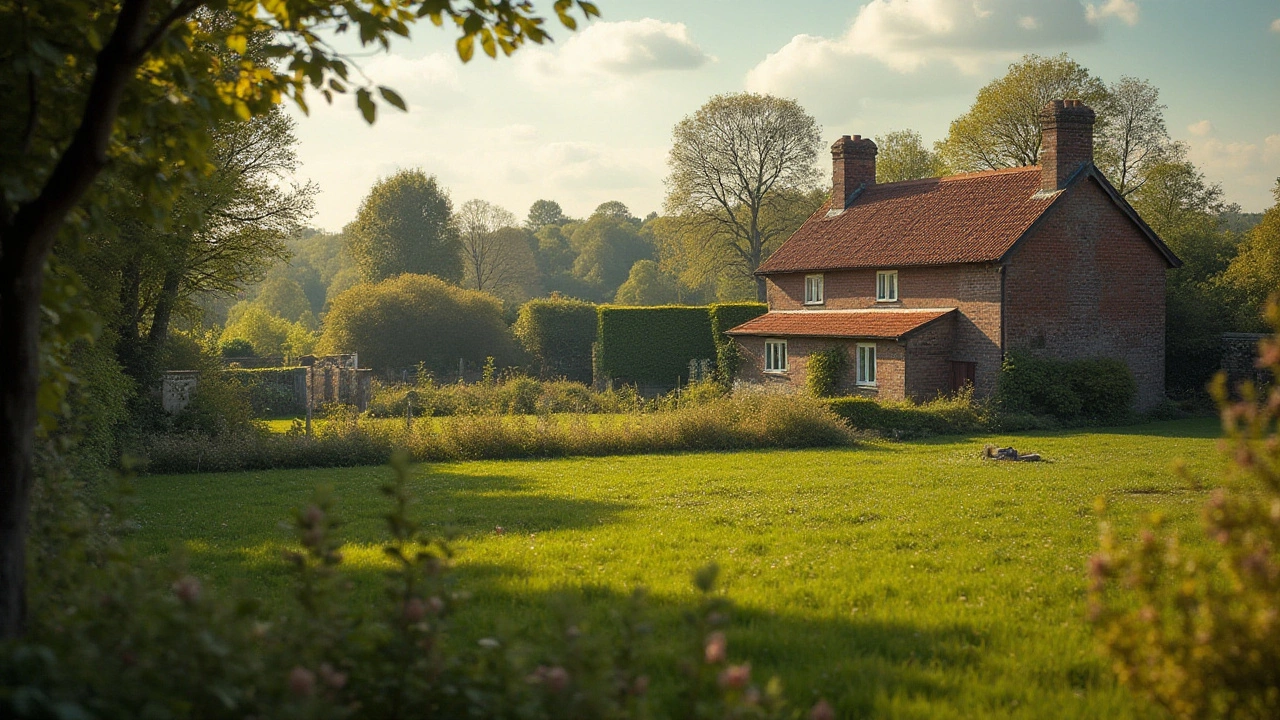When it comes to older homes, the term 'settling' often gets tossed around, raising questions and sometimes concerns for homeowners. If you’ve been living in a particular house for a couple of decades, you may notice certain changes, leaving you to wonder if settling is at play.
House settling isn't as mystifying as it might seem. It's simply the natural process of a home gradually adjusting to the soil beneath and its surroundings. While it mostly occurs in the early years post-construction, settling can continue even after 20 years, albeit more subtly.
In this article, we’ll dive into what homeowners need to know about house settling after two decades. We’ll explore the factors that drive this process, teach you how to spot signs, and share some practical tips on managing any related issues. Armed with this knowledge, you'll be better equipped to maintain the integrity and comfort of your beloved home.
- Understanding House Settling
- Factors Influencing Settling
- Identifying Signs of Settling
- Tips for Managing Settling
Understanding House Settling
The concept of house settling can be a bit enigmatic, especially for new homeowners or those unacquainted with the ways their home interacts with the environment. But what exactly happens when a house 'settles'? In simple terms, settling refers to the process in which a home slowly adjusts to the conditions of the land it sits upon. Over time, materials like wood, concrete, and steel shift in response to numerous environmental influences. Soil compaction is a significant factor; it occurs when the ground beneath a home gradually compacts or loosens, causing the structure to shift subtly. These shifts can lead to hairline cracks in walls or the slight misalignment of doors and windows, which might seem unsettling but are often expected to a degree. Understanding that this is a natural occurrence can help homeowners manage expectations and address issues calmly.
Most houses undergo the most noticeable settling within the first few years post-construction, but that's not where it ends. Even after 20 years, structural integrity can begin to change again due to a myriad of factors like climate change impacts, nearby construction, or even changes in the water table. Homeowners might observe changes in their landscape, see cracks reappear or find that a door begins to stick again. While these signs can be disconcerting, they are part of a house's natural aging process. A fascinating tidbit from home inspection veterans is the term 'seasonal creaks' used to describe the sounds homes make as they adjust with humidity and temperature shifts.
It's noteworthy that the materials used in construction play a remarkable role in how a house settles. Homes built with a stronger foundation and using high-quality materials are less prone to problematic settling. This is why, according to experts like Dan DiClerico from HomeAdvisor, "A well-constructed house, built on a good site, by a reputable builder, should experience little in the way of noticeable settlement."
"It's the poorer construction, built on improperly prepared land, that tends to give us the most problems," notes DiClerico.Prospective buyers or those considering building a home must take these factors into account if avoiding settling issues is paramount.
Historic homes offer a unique perspective on understanding settling. Many older homes have stood for centuries, adapting gracefully to the earth's movements and demonstrating resilience that newer constructions might lack. Often made with materials like stone and brick, these homes attest to the importance of quality construction and suitable site selection. For instance, in many heritage buildings, settlement becomes apparent in the form of sloped floors, uneven baseboards, or gaps in door frames. Yet, these homes remain steadfast, offering lessons in durability. So, whether you're living in or renovating an older property, it's wise to consult with restoration experts who can provide insights tailored to preserving structural integrity without compromising the historical essence of the house.

Factors Influencing Settling
When considering the concept of house settling after two decades, various intricate factors come into play. It’s not just the age of the new builds that matters; the underlying causes for these shifts often originate from the ground up, affecting the home’s structural integrity. One of the primary culprits is soil composition. Different types of soil expand and contract with moisture levels, leading to a house's gradual sinking or shifting. Clay, for instance, is notorious for its expansive properties, swelling significantly when wet and shrinking when dry. This can cause considerable movement beneath the home's foundation, leaving noticeable marks in the form of cracks or misaligned doors.
The climate where the house is located also holds significant sway. In regions marked by heavy rainfall or prolonged droughts, the alternating patterns of soil saturation and drying can exacerbate settling. This is particularly visible in areas susceptible to flooding, where water can carry away soil, compromising the foundation's stability. As the earth beneath shifts, the house tries to adjust to its new support conditions. This settling isn't instantaneous; it occurs quietly over the years, often going unnoticed until other signs arise.
Quality of construction also plays a pivotal role in determining how well a house copes with settling. A well-constructed home, with a deep and solid foundation, is likely to withstand settling better than those with less meticulous construction practices. Builders who ensure robust materials and follow local building codes can mitigate the extent of settling. On the contrary, homes slapped together with cost-cutting measures may reveal their weakness over time, with noticeable issues cropping up sooner than expected.
"The strength of a building's foundation is a huge determinant in how it withstands the sands of time," notes renowned structural engineer, Adam Logan.
Trees and vegetation near a house bring their own unique set of challenges. While greenery offers aesthetic and environmental benefits, tree roots can intrude upon a home’s foundation. The roots seek out moisture, and in the process, they can disturb the soil that provides support to the building. This leads to variable settling patterns, particularly if the vegetation is not accounted for during the planning and construction phases. Homeowners are often unaware of the root networks sprawling beneath their feet until visible settling signs suggest their quiet underground battle.
Lastly, seismic activity must be considered, even in regions not commonly associated with earthquakes. Minor shifts and shakes, often imperceptible to the naked eye, can gradually affect a home's settling process. These vibrations, though small on each occasion, can combine over years to alter a building's balance. A comprehensive understanding of these factors can assist homeowners in predicting potential issues and strategizing proactive home maintenance measures. Knowledge of what prompts house settling is invaluable, providing the foresight needed to maintain a house that remains standing, strong, and secure.

Identifying Signs of Settling
Spotting signs of house settling is akin to detective work, where observing the smallest cracks or shifts could hint at something more significant beneath the surface. When a house has been standing for 20 years or more, subtle changes may often go unnoticed until they manifest as small tell-tale signs. The most common indications to watch for include the appearance of cracks in walls, particularly around doors and windows. These fissures can be tiny and hairline initially, but over time, they might widen if settling continues. The manifestation of such features typically indicates that certain parts of your home may no longer be level or that parts are shifting to accommodate changes in the soil or structure.
Another vital sign lies in any difficulty you may have with doors and windows. It's not uncommon for windows and doors to stick or fail to latch properly when settling has altered their frames. A sudden change where you find you need to exert more force or notice them catching where they didn't before, might be pointing you towards settlement. Floors can also offer clues; if the ground now seems uneven, there could be a shift that’s affecting your home’s balance. Remember, while some degree of settling is normal even after many years, any changes that alter functionality or safety should be inspected by a professional.
Your home's foundations are literal and figurative backbones, and any visible damage there can be telling. Inspect the foundation for new or expanding cracks since they might indicate more extensive shifting. Pay attention to your basement, too, if you have one; this area sits closest to the foundation and can be a window into what’s happening beneath ground level. Dampness or water ingress might suggest a foundation problem stemming from a settling issue. A regular inspection habit can save you significant headaches if it leads you to discover potential settling early and enables prompt mitigation.
"Homeowners often underestimate the subtleties of house settling. While it's a natural process, certain signs warrant attention to protect your investment," says George Thompson, a well-respected structural engineer.
Making use of a leveler or even a ball rolled across the floor can help detect unseen tilt in the plane of your home’s structure. Foundation settling, detected this way, might surprise many home-dwellers who aren’t accustomed to seeing their environment at a tilt. Equally important is listening—odd noises like creaks or pops might accompany settling if structural elements shift. As you develop a better ear for these auditory clues, you can decipher whether they’re mere product of seasonal changes or potential signals of more prolonged settling.
Finally, engaging with assessments by structural professionals isn’t just prudent but often necessary. As settlements sometimes reveal minor problems which could cascade to bigger issues, experts can utilize specialized equipment to accurately determine the extent and severity of settling. An engineer's report can provide immense peace of mind and guidance for any repairs or reinforcements needed. Keeping an open channel with professionals ensures you not only spot signs early but also gain expert insights into remedies tailored to your specific home’s structure and condition.

Tips for Managing Settling
So your beloved home has been around the block a few times and is showing signs of settling. Don’t panic! Understanding and managing house settling can be straightforward with some practical strategies. The first step is regular inspections. Schedule some time at least once or twice a year to walk through your home with a critical eye. Look for tell-tale signs such as cracks in walls, sticking doors, or windows that won’t open smoothly. These indicators can offer valuable insights into the areas that need attention. Implementing a regular schedule not only keeps home issues in check, but it ensures you catch potential problems early, saving time and money in the longer run.
Moisture control is another key aspect of managing settling, particularly if you’re living in a region with heavy rainfall or fluctuating temperatures. Check your gutters, downspouts, and drainage systems regularly, as they play a crucial role in directing water away from your home's foundation. Poor drainage can lead to soil expansion and contraction, exacerbating settling issues. A simple DIY fix can involve extending downspouts away from your house or ensuring garden beds slope away from your foundation. In addition, consider installing a sump pump in areas where water accumulation poses a consistent problem.
Sometimes, managing settling might demand professional help, particularly when safety is a concern. Surely, no one fancies the thought of inviting experts over, but it can occasionally be the best route. Consulting with a structural engineer can provide peace of mind as they inspect load-bearing walls and the overall structural integrity of the home. From underpinning a section of the foundation to reinforcing a basement wall, there are several solutions to tackle severe settling. Don’t hesitate to get quotes and timelines from several professionals, as well as seek feedback from friends or neighbors who have navigated similar issues.
One handy tip is to embrace landscaping as part of your maintenance strategy. Plant trees and shrubs wisely, keeping them at a fair distance from the foundation. The roots can draw moisture from the soil, leading to shifting if situated too closely. However, greenery also acts as a natural barrier against water absorption around the house, conditioning the soil effectively during seasonal changes. This adds a lovely personal touch to sustaining your property too.
It's helpful to plan financially ahead, setting aside funds for potential home maintenance needs. Consider establishing a 'house contingency budget,' similar to putting something away for a rainy day, so you are prepared for unforeseen settling repairs. Depending on your economic situation, this fund could range anywhere from five to ten percent of your home's annual value. This buffer will alleviate stress and cultivate a proactive mindset toward tackling settling challenges without financial strain.
Remember, every home tells a different story. What works for one might not work for another, so trust your instinct and the specific needs your house presents. After all, it’s not just about fixing walls or leveling floors—it’s about preserving the warmth and sanctuary your home offers. Managing settling demands a bit of vigilance and effort, but it ensures your house remains healthy, safe, and a place you proudly call home.
